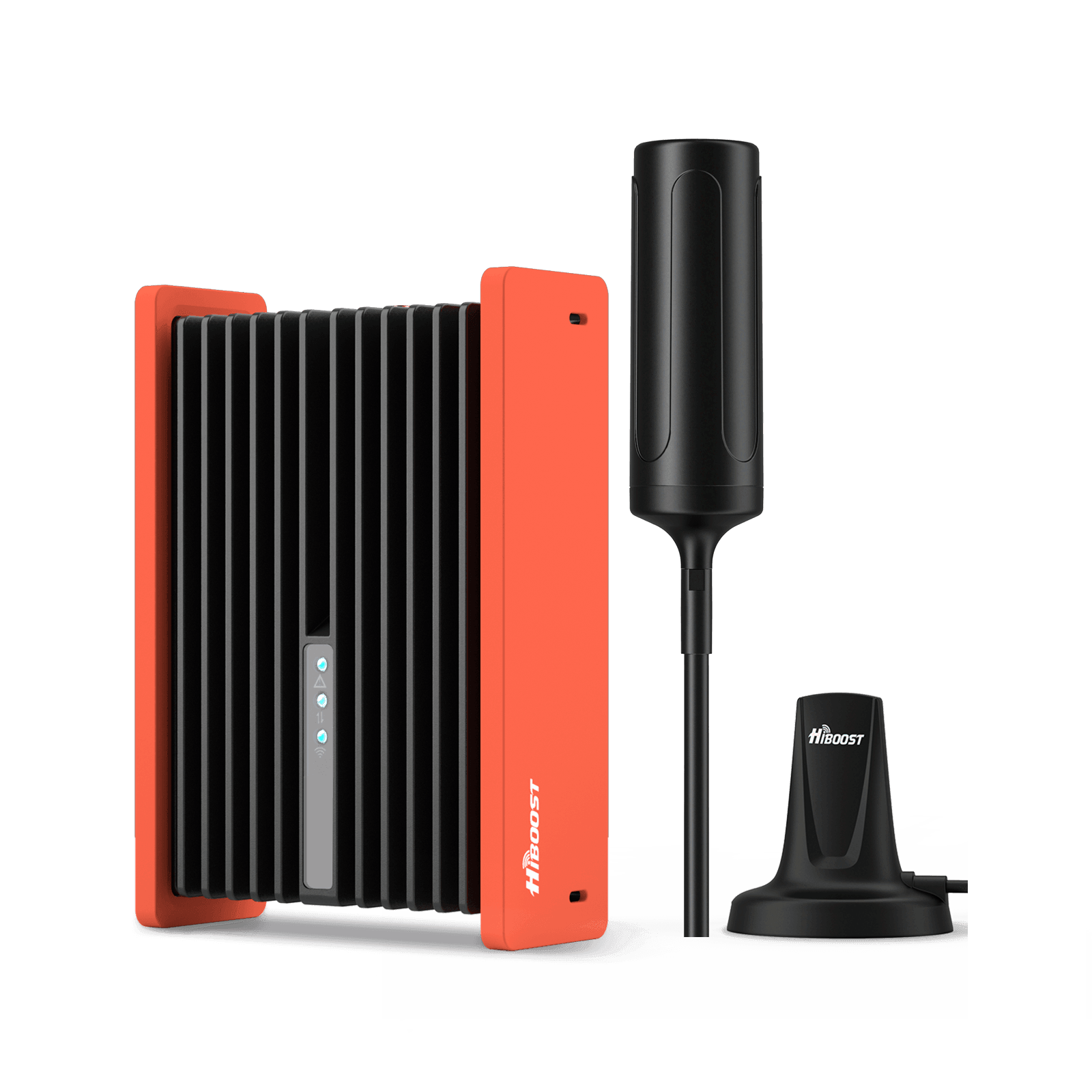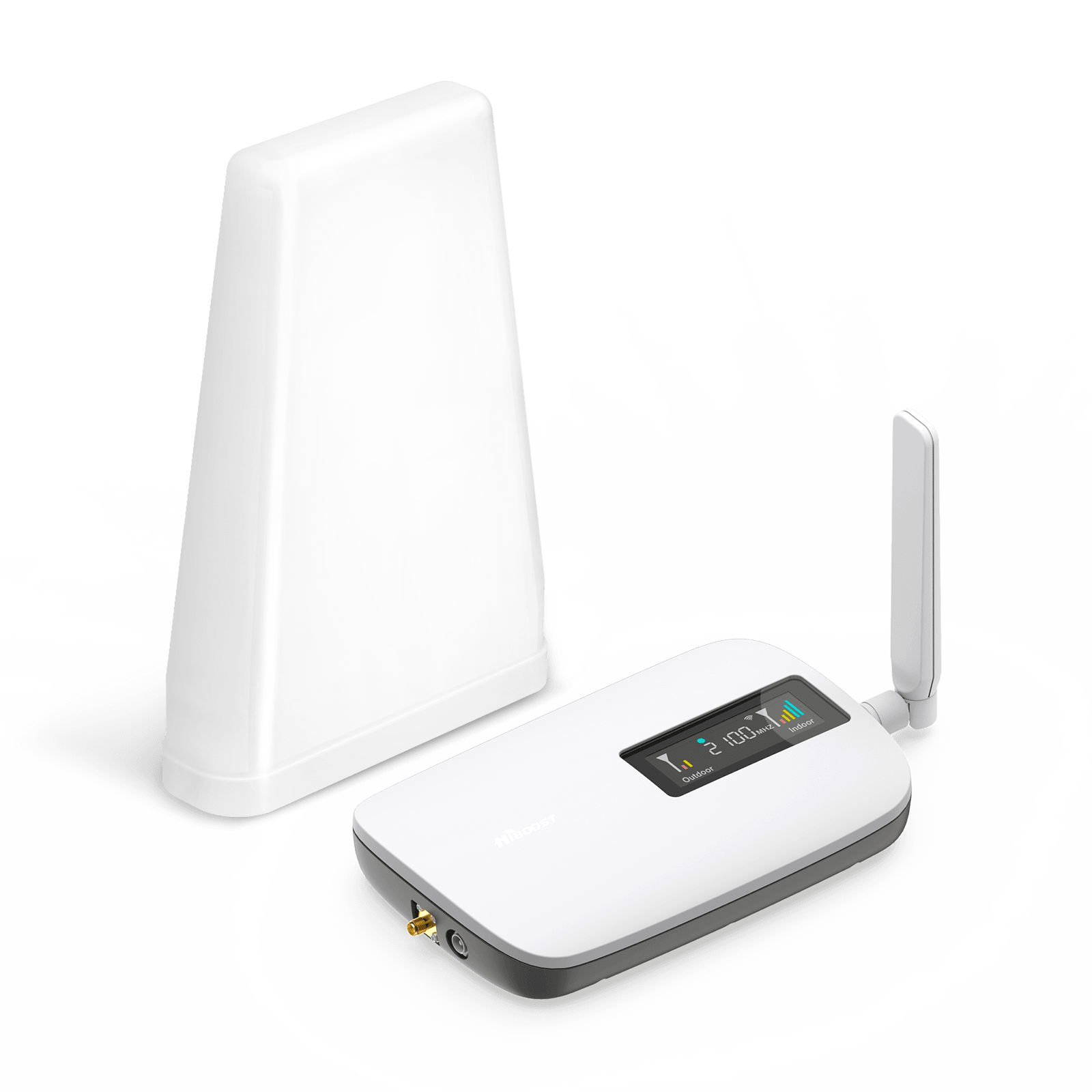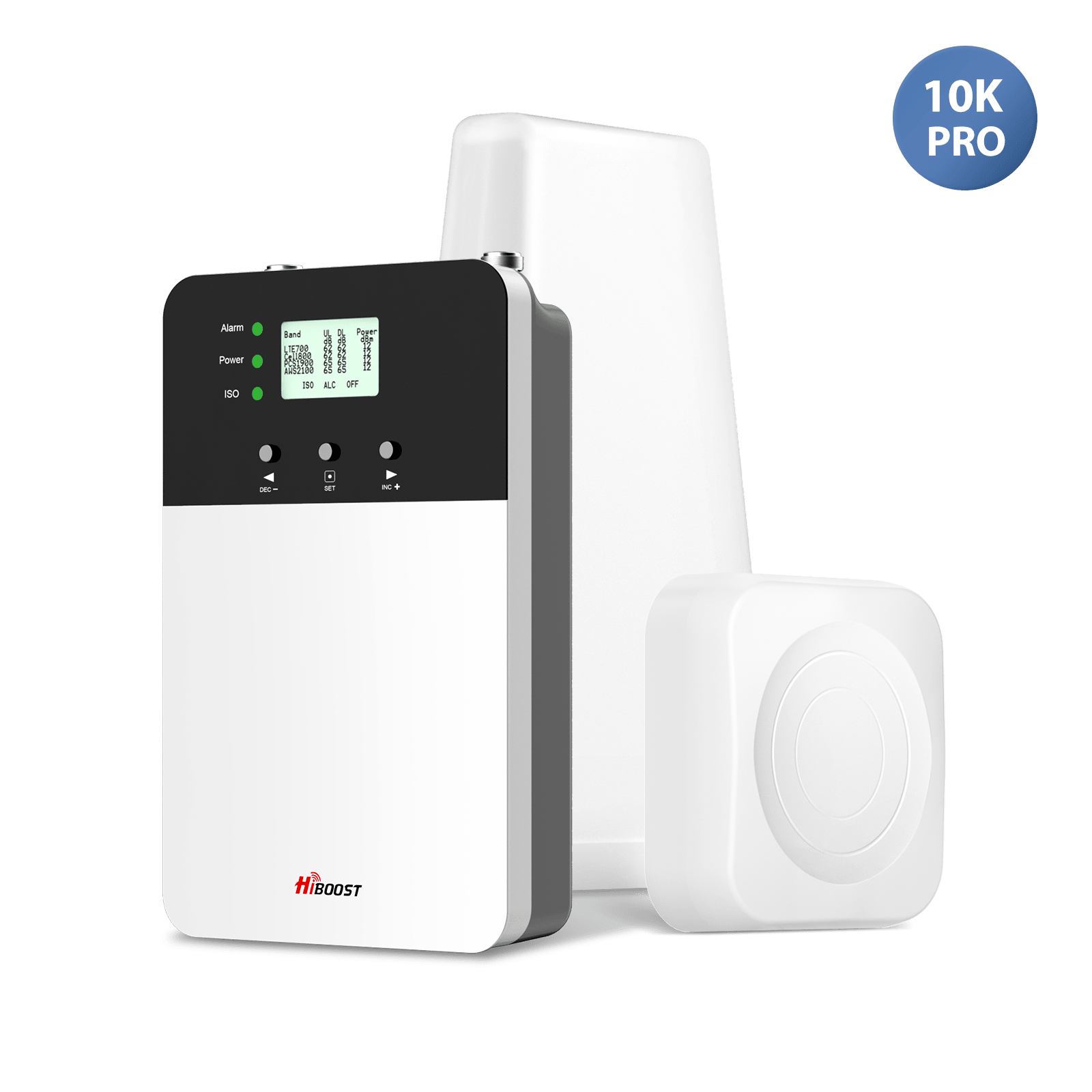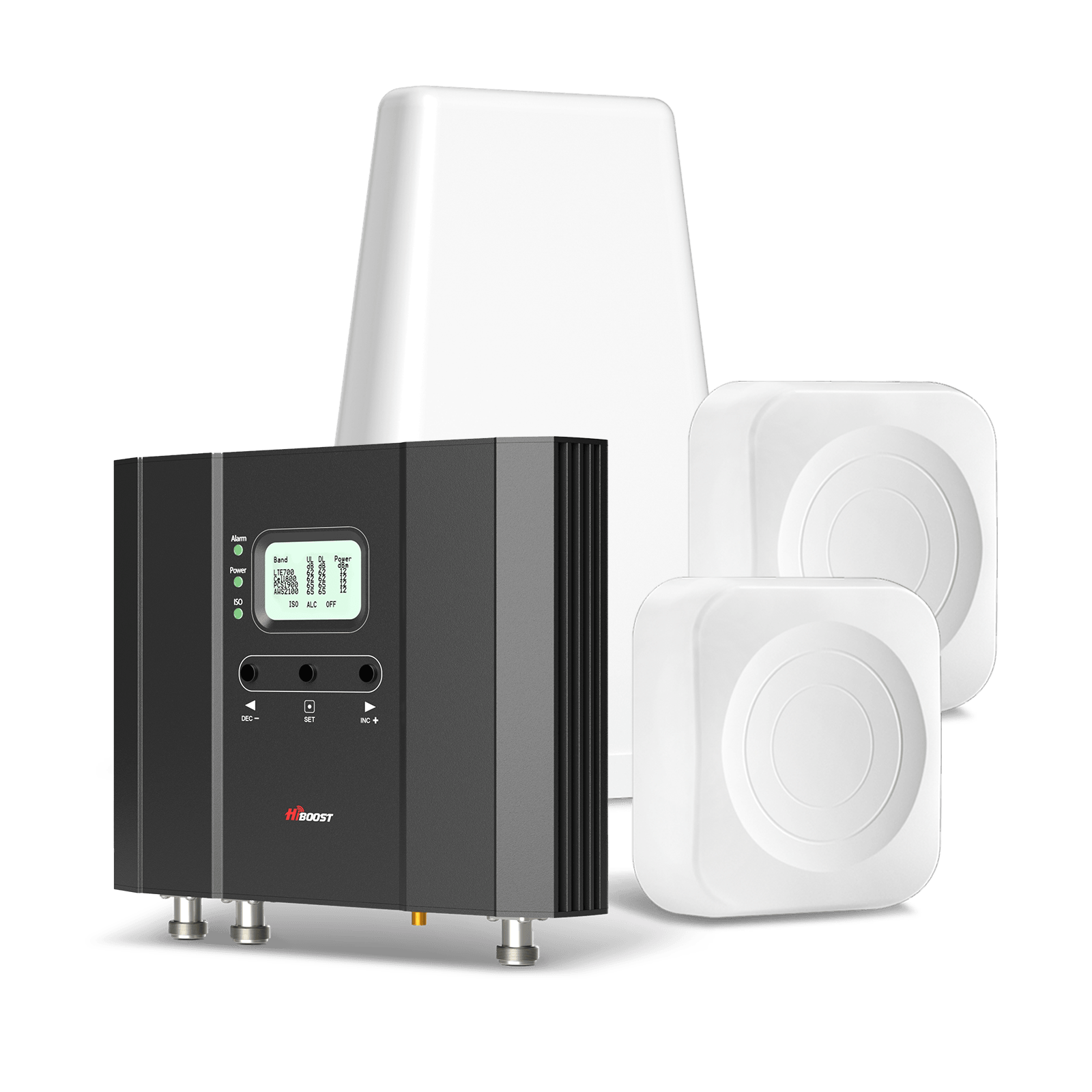Table of Contents
In the modern age of communication, staying connected is more important than ever. Whether it's receiving television broadcasts, making long-distance radio transmissions, or boosting wireless signals, antennas play a critical role.
We Fix Poor Cell Phone Signal! Find The Right Signal Booster For You:
Among the various types of antennas available, the Yagi antenna stands out due to its efficiency and reliability. Developed by Japanese engineers Hidetsugu Yagi and Shintaro Uda in the 1920s, the Yagi antenna has become a staple in various communication systems.
Its design, characterized by a driven element, reflector, and one or more director elements, allows it to focus radio waves in a specific direction, enhancing signal strength and clarity. This makes Yagi antennas particularly effective in environments where signal reception is challenging.
But what exactly makes the Yagi antenna so special? Why is it preferred for certain applications over other types of antennas? In this blog, we will delve into the mechanics of Yagi antennas, exploring their structure, function, and the diverse scenarios where they are most effectively utilized.
Whether you're a tech enthusiast, a ham radio operator, or simply curious about how your TV signal remains crisp and clear, this comprehensive guide will shed light on the fascinating world of Yagi antennas.

What Is a Yagi Antenna Used For?
Yagi antennas are versatile and widely used in various applications. Here are the primary uses:
- Television Reception: Ideal for capturing distant TV signals, especially in rural areas.
- Ham Radio: Preferred by amateur radio operators for long-distance communication.
- Wireless Networking: Enhances Wi-Fi signal strength and range in challenging environments.
- Cellular Boosting: Improves mobile signal reception in areas with poor coverage.
- Radar Systems: Used in radar technology for precise and reliable data transmission.
- Satellite Communication: Ensures effective and focused signal transmission to satellites.
These applications highlight the Yagi antenna's capability to provide robust, directional signal enhancement across different communication needs.

Advantages and Disadvantages of a Yagi Antenna Compared to Other Types of Antennas
Advantages:
- High Gain: Yagi antennas offer excellent gain, focusing energy in one direction, which improves signal strength and range.
- Directional Control: Their directional nature allows for better targeting of specific signals, reducing interference from other sources.
- Compact Design: Despite their high performance, Yagi antennas are relatively compact and easy to install.
- Cost-Effective: They provide a good balance of performance and cost, making them an affordable option for many applications.
Disadvantages:
- Narrow Bandwidth: Yagi antennas are typically optimized for a specific frequency range, limiting their versatility across different frequencies.
- Directional Limitations: While their directional focus is an advantage, it also means they need to be precisely aimed, which can be a drawback in situations where signal direction frequently changes.
- Complex Installation: Proper installation and alignment are crucial for optimal performance, which can be more complex compared to omnidirectional antennas.
Understanding these advantages and disadvantages helps in making informed decisions when choosing an antenna for specific needs.
How Does a Yagi Antenna Work?
The Yagi antenna operates on the principle of directional signal transmission and reception, making it highly effective for various applications. Here’s a breakdown of how it works:
- Driven Element:
The driven element, usually a dipole, is connected to the transmitter or receiver and is responsible for receiving and transmitting signals.
- Reflector:
Positioned behind the driven element, the reflector enhances the signal strength by reflecting the signals back toward the driven element, increasing its gain.
- Directors:
One or more director elements are placed in front of the driven element to direct the radio waves in a specific direction, further focusing and amplifying the signal.
- High Gain:
The combination of these elements results in a high-gain, directional antenna, making it ideal for long-distance communication.
- Impedance Matching:
Proper impedance matching ensures minimal signal loss and maximizes the efficiency of the antenna.
How to Install and Test a Yagi Antenna
1. Choose Location:
Select a location with a clear line of sight to the signal source for optimal performance.
2. Mount the Antenna:
Securely mount the antenna on a pole or bracket, ensuring it is stable and oriented in the correct direction.
3. Connect to Receiver/Transmitter:
Attach the antenna cable to your receiver or transmitter, ensuring all connections are tight and secure.
4. Align the Antenna:
Adjust the antenna direction to maximize signal strength, using a signal meter or your device’s signal strength indicator.
5. Test Signal:
Perform a signal test to verify the antenna’s performance. Fine-tune the alignment if necessary to achieve the best possible reception or transmission.
6. Secure and Finalize:
Once the optimal position is found, securely fasten all components and recheck the connections.
Following these steps will help ensure your Yagi antenna is properly installed and functioning efficiently.
Where To Buy Yagi Antennas: A Guide to Purchasing Your Ideal Antenna
When looking to purchase Yagi antennas, it's essential to find a reliable supplier that offers quality products and excellent customer service. Here are some points to consider:
1. Online Retailers:
Many reputable online platforms specialize in antennas, offering a wide range of Yagi models with customer reviews to guide your decision.
2. Electronics Stores:
Local electronics retailers often carry Yagi antennas, providing the advantage of in-person assistance and immediate availability.
3. Specialty Antenna Shops:
Stores dedicated to telecommunications equipment are likely to stock a variety of Yagi antennas, along with expert advice on installation and usage.
4. Manufacturer's Websites:
Directly purchasing from the manufacturer ensures authenticity and may offer promotions or discounts.
For those seeking reliable Yagi antennas and boosting solutions, consider Hiboost products such as the Hiboost 4K Smart Link, Hiboost 15K Smart Link Deluxe, and Hiboost Home 4K Plus Pro. These products are designed to enhance signal reception and are backed by Hiboost's commitment to quality and innovation.
Explore our range at Hiboost, where we prioritize customer satisfaction and offer competitive pricing on top-notch telecommunications solutions.
Where To Buy Yagi Antennas: Your Guide to Finding the Best Products
Finding the right Yagi antenna can significantly enhance your communication and signal reception experience. Here’s where you can purchase high-quality Yagi antennas, including products from Hiboost:
1. Direct from Manufacturer Websites:
- Visit the official Hiboost website to explore their range of Yagi antennas, such as the Hiboost 4K Smart Link and 15K Smart Link Deluxe models.
2. Online Retailer:
- When looking for top-quality Yagi antennas, consider shopping directly from us, Hiboost. Our official website offers a comprehensive selection, including popular models like the Hiboost Home 4K Plus Pro and 4K Mate Pro.
Each product is designed to deliver exceptional signal performance, ensuring you get the best possible connectivity for your needs.
3. Electronics Stores:
- Check local electronics stores or big-box retailers that carry telecommunications equipment; they may have Hiboost Yagi antennas available for purchase.
By choosing Hiboost products, you ensure top-notch quality and performance, backed by advanced technology designed to optimize signal strength and clarity.
Whether for improving TV reception, enhancing cellular signals, or boosting Wi-Fi connectivity, Hiboost Yagi antennas offer reliable solutions tailored to meet your communication needs.

What is the Difference Between Yagi and Omni Antennas?
Yagi antennas and omnidirectional antennas serve distinct purposes due to their different designs and functionalities.
Yagi Antennas:
- Directionality: Yagi antennas are highly directional, meaning they focus their signal in a specific direction.
- Gain: They typically have higher gain compared to omnidirectional antennas, making them ideal for long-range communication.
- Use Cases: Commonly used in applications where the signal needs to be concentrated, such as point-to-point communication and TV reception in a specific direction.
Omni Antennas:
- 360-Degree Coverage: Omnidirectional antennas radiate signal evenly in all directions.
- Versatility: They are suitable for scenarios where signal reception from multiple directions is required, like Wi-Fi hotspots and cellular base stations.
- Practicality: Omnidirectional antennas are easier to install and require less precise aiming compared to Yagi antennas.
Is a Yagi Antenna Better than Omnidirectional Antennas?
The choice between Yagi and omnidirectional antennas depends on the specific use case. Yagi antennas excel in providing focused, high-gain signal in one direction, making them preferable for long-distance communication.
In contrast, omnidirectional antennas offer versatility and simplicity in applications requiring 360-degree coverage. Therefore, the "better" option depends on your specific communication needs and environment.
How does the range of a Yagi antenna compare to an Omni?
Yagi antennas and Omni antennas are two distinct types with different range characteristics. Yagi antennas typically have a longer range and higher gain compared to Omni antennas.
This is because Yagi antennas are directional, focusing their signal in a specific direction, which increases their effective range.
In contrast, Omni antennas radiate signals uniformly in all directions, making them suitable for applications where coverage in all directions is essential but sacrificing some range and gain compared to Yagi antennas.
What is the difference between a Yagi antenna and a log periodic antenna?
Yagi antennas and log periodic antennas are both directional antennas but differ in design and application.
Yagi antennas consist of multiple elements (driven element, reflector, and directors) arranged linearly, optimized for high gain and directional focus.
In contrast, log periodic antennas feature multiple elements that vary in length along the antenna, allowing them to operate over a wide range of frequencies.
While Yagi antennas excel in specific directional applications with high gain, log periodic antennas are versatile across multiple frequencies but typically offer lower gain compared to Yagi designs.
For premium Yagi antennas and expert advice, visit Hiboost to explore our range of high-performance telecommunications solutions.
In conclusion, Yagi antennas represent a pinnacle of directional antenna technology, pivotal for enhancing signal reception across various communication applications.
At Hiboost, we are committed to providing top-tier Yagi antennas like the Hiboost Home 4K Plus Pro and 4K Mate Pro, designed to optimize signal strength and reliability.
Whether you're aiming to boost TV reception, improve cellular connectivity, or enhance Wi-Fi signals, our products ensure exceptional performance backed by innovation and quality.
Explore our range at Hiboost to discover how our Yagi antennas can elevate your communication experience with reliable, crystal-clear connections.
Popular Articles:
> Which Antenna is Best? A Yagi Antenna or Omnidirectional?
> How to check out a nearby cell tower location?
> What Causes A Cellular Dead Zone And How to Fix It?
> how to get better service on iphone
> How To Measure Signal Strength In Decibels On Your Cell Phone?









Leave a comment
All comments are moderated before being published.
This site is protected by hCaptcha and the hCaptcha Privacy Policy and Terms of Service apply.